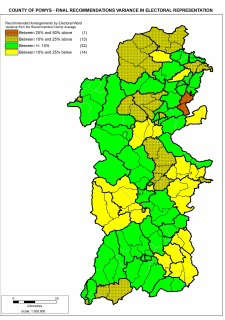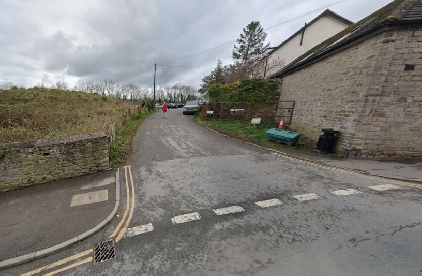
There will be five fewer Powys County Councillors after the council election in May 2022, it has been confirmed.
Welsh Government minister for finance and local government, Rebecca Evans MS has today (Thursday, July 22) said that she had accepted the Local Democracy and Boundary Commission for Wales (LDBCW) recommendations for Powys.
Ms Evans, said: “On 21 July I wrote to the leader and chief executive of the County of Powys to confirm my decision.”
In June. Ms Evans announced that all 22 local authorities in Wales would find out by September what changes to their boundaries would be made ahead of next year’s elections.
LDBCW chief executive Shereen Williams said: “I’m delighted that the Welsh Government has accepted these recommendations with only minor modifications.
“These changes will mean greater electoral parity for the people of Powys.”
The changes will mean the number of councillors falls from 73 to 68.
At present each councillor represents, on average, 1,461 electors. By bringing the number of councillors down to 68 the ratio of voters per councillor increases to 1,569. The ward boundaries have also been rejigged to get as close to that figure as possible.
The number of electoral wards will decline further, from 73 to 60, as a number of current wards would be merged and will elect two councillors.
These multi-member wards will be Aber-craf and Ystradgynlais, Crickhowell with Cwmdu and Tretower, Knighton with Beguildy, Llandrindod South, Llanidloes, Newtown Central and South, Brecon East and Brecon West.
There will be no change in 26 wards.
These are:
Builth, Caersws, Churchstoke, Cwm-twrch, Dolforwyn, Glantwymyn, Gwernyfed, Hay,Llandrindod North, Llandrinio, Llandysilio,Llanfyllin,
Llanrhaeadr-ymMochnant/Llansilin, Llansantffraid, Machynlleth, Maescar/Llywel, Newtown East, Newtown Llanllwchaiarn North, Newtown
Llanllwchaiarn West, Old Radnor, Rhayader,Rhiwcynon, Talgarth, Talybont-on-Usk, Tawe-Uchaf, Ynyscedwyn.
However, there will be some changes to the names of these and others.
The Welsh name for the area or town will be added to the ward name.
For example Hay (on-Wye) will also be known as Y Gelli, and Builth as Llanfair-ym-Muellt.
In Newtown, two current wards, Newtown Llanllwchaiarn North will become known as Newtown North/Gogledd y Drenewydd, while Newtown Llanllwchaiarn West will become known as Newtown West/ Gorllewin y Drenewydd.
The report shows that the wards of Llangattock and Llangynidr will be combined to form a single-member electoral ward.
The wards of Bwlch and Llangors will be combined to form a single ward.
The ward of Felinfach will be split between Bronllys and Yscir bringing the number down from three to two councillors.
The Newbridge part of Llanyre ward will be added to the current Disserth and Trecoed ward.
Llanbadarn Fawr, Llanbadarn Fynydd, Llanbister and Llanddewi Ystradenny are combined to form an electoral ward which will be known as Ithon
Valley/Dyffryn Ithon.
Norton will be split from Presteigne and added to the ward of Llangunllo.
Blaen Hafren ward will cease to exist with Llangurig added to a bigger two councillor Llanidloes ward, and the rest going to Llanbrynmair.
Dolfor will be taken from the Kerry ward and added to Llandinam ward
The ward of Forden ward will be split between Montgomery and Trewern bringing the number of councillors down from three to two.
Castle Caereinion will be taken out of the Guilsfield ward and added to Berriew.
The Banwy ward will see Llanerfyl taken away and added to the Llanfair Caerenion ward.
The rest of Banwy will be added to the current wards of Llanfihangel and Llanwddyn, which will only be represented by one councillor instead of the current two.
Llangyniew from the current Llanfihangel ward, will be added to Meifod.
Some councillors had sent their own arguments for and against the proposals.
The councillors discussed the proposals and described them as “bonkers” in May 2019.
This was after the deadline for formal submission had passed in March 2019.


 Hay cattle market site set to be council pay and display car park
Hay cattle market site set to be council pay and display car park

